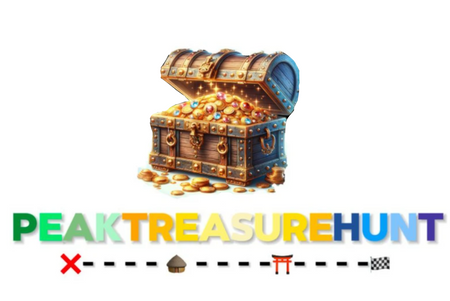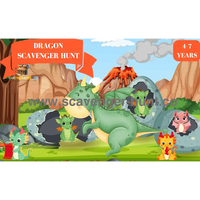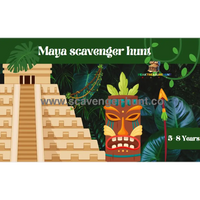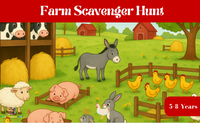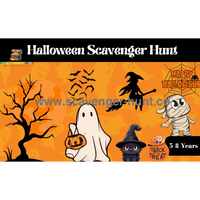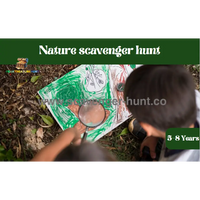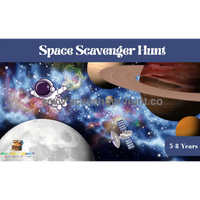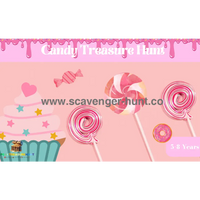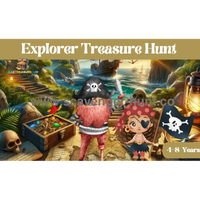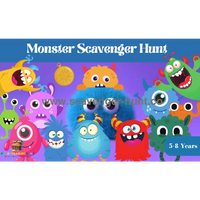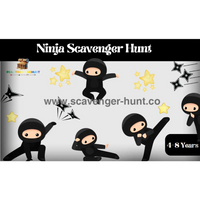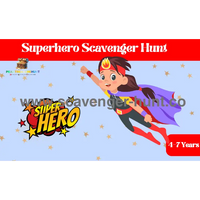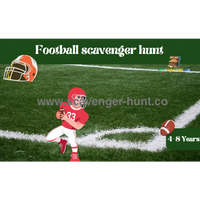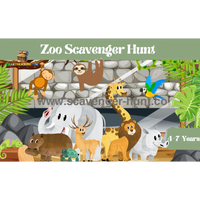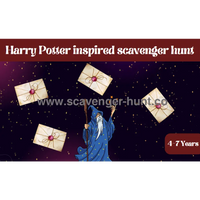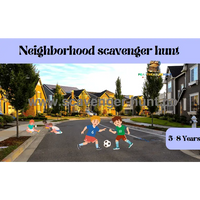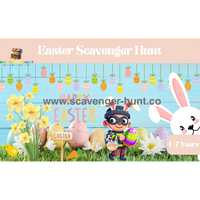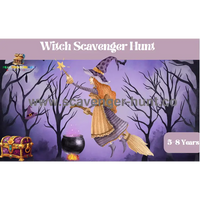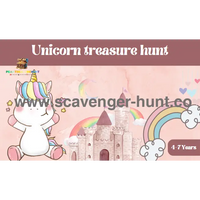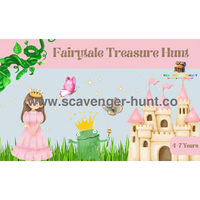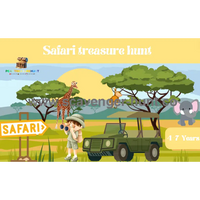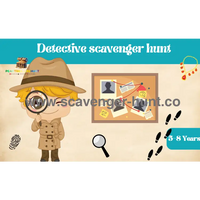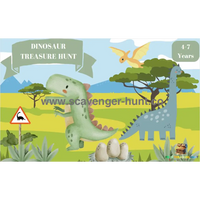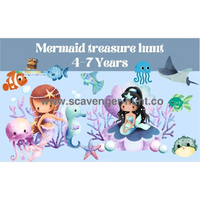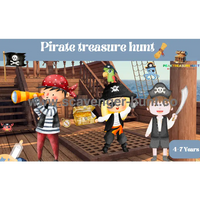🙌Secret Spots and Clever Hiding Places for Clues: A Parent's Guide to Epic Treasure Hunts
Introduction
As a professional party planner and mother of three adventurous kids, I've organized hundreds of treasure hunts over the past 15 years. Finding the perfect hiding places for clues can make or break a treasure hunt experience. Whether you're planning a birthday party, a weekend activity, or just wanting to add some excitement to a regular day, knowing where to conceal those precious hints will transform an ordinary search into an extraordinary adventure. This guide will help you discover creative and safe hiding spots that will challenge and delight young explorers while keeping them engaged throughout their quest.
1: Indoor Hiding Places That Spark Joy
When planning indoor treasure hunts, the key is finding hiding places for clues that are both challenging and accessible. Here are some tested favorites:
- Under lamp shades (for the soft glow effect)
- Inside board game boxes
- Behind picture frames
- In empty tissue boxes
- Taped under chairs or tables
- Inside unused shoes
- Between book pages
According to a recent survey of 500 parents, indoor treasure hunts keep children engaged for 45% longer when clues are hidden at varying heights and locations.
Creating a treasure hunt indoors can be a delightful adventure, especially when you incorporate hiding places that add an element of surprise and joy. Whether you're planning a birthday party, a family game night, or just a fun activity for the kids, the hiding spots you choose can make all the difference. In this chapter, we will explore some imaginative indoor hiding places that not only conceal treasures but also spark joy and excitement for everyone involved! 🎉
1. The Cozy Nook 📚
Description: A cozy nook can be any small, comfortable space in your home—think of a reading corner filled with cushions or a cozy chair tucked away in a corner.
How to Use: Hide your treasure inside a colorful basket or beneath a pile of plush cushions. You can even leave a note on a nearby bookshelf, guiding treasure hunters to “snuggle up and look around.” This hiding spot invites a moment of relaxation and discovery!
2. The Secret Drawer 🗝️
Description: Every home has a few secret drawers—those special spots that hold miscellaneous items, from stationery to crafting supplies.
How to Use: Choose a drawer that’s not frequently used. Place your treasure at the back, surrounded by fun items that spark curiosity, like stickers or colorful pens. You could leave a clue that reads, “Where your creativity comes alive, check the place where the hidden treasures thrive!” 🖌️🎨
3. The Kitchen Canister 🍪
Description: Kitchen canisters are not only practical but also make for excellent hiding spots, especially if they look unassuming from the outside.
How to Use: Select a canister that holds something innocuous, like sugar or flour. Place a small treasure or note inside, and leave a clue that hints at its sweet location. A playful note like, “I’m not sugar-coated, but I sure can make you smile!” can add to the fun.
4. Under the Dining Table 🍽️
Description: The area under the dining table can become a mysterious hiding place, especially during a meal or family gathering.
How to Use: Attach your treasure to the underside of the table using a string or tuck it into a decorative tablecloth. Leave a clue that suggests looking “under the place where we gather for good food and fun.” This spot also invites family members to play together as they hunt for the treasure!
5. Inside a Shoe or Boot 👟
Description: Shoes are often overlooked, making them perfect hiding spots! Whether it’s a sneaker or a winter boot, these everyday items can hold delightful surprises.
How to Use: Hide your treasure inside a clean, decorative shoe that’s not worn often. You can leave a clue that says, “Step into adventure—check the place where I rest my feet!” This hiding spot adds a layer of whimsy as treasure hunters rummage through the shoes.
6. Behind the Couch Cushions 🛋️
Description: The couch is a treasure trove of hiding places, especially when you consider the cushions.
How to Use: Slide a note or small treasure behind the cushions and leave a clue like, “Where you sit to relax and unwind, a cozy treasure you will find.” This spot invites treasure hunters to dig into the softness of the couch, making the hunt even more engaging!
7. The Laundry Basket 👕
Description: The laundry basket is often a place of chaos, but it can also be a hiding spot full of surprises.
How to Use: Hide your treasure beneath a pile of colorful laundry or inside a clean, folded towel. Leave a note that says, “Among the colors of everyday life, a treasure awaits amidst the fabric of strife.” This hiding place brings a sense of humor and charm to the hunt!
8. In a Potted Plant 🌱
Description: Potted plants add beauty to any indoor space and can serve as secret hiding places.
How to Use: Tuck a small treasure or clue among the leaves of a potted plant. Choose a spot that doesn’t disturb the plant’s health. You could write a clue like, “Where green leaves sway, a treasure is hidden, waiting to brighten your day!”
9. The Bookshelf Adventure 📖
Description: Bookshelves are classic hiding spots for treasures, blending the excitement of reading with the thrill of the hunt.
How to Use: Place your treasure inside a book, preferably one that is seldom read. Leave a clue that hints, “Between the pages of stories untold, a treasure awaits—so brave and bold!” This hiding spot encourages a love of reading while adding an adventurous twist!
10. The Bathroom Cabinet 🚿
Description: The bathroom cabinet is often overlooked but can hold fun surprises!
How to Use: Hide your treasure behind toiletries or in a decorative box. Leave a playful clue that reads, “In the place where bubbles rise, a hidden surprise will bring you joy!” This spot adds an element of surprise to the hunt, making it more adventurous!
Conclusion 🎊
Indoor treasure hunts are a fantastic way to create joyful memories and foster creativity. By incorporating imaginative hiding places that spark joy, you can make each treasure hunt an adventure full of laughter and excitement. So gather your friends and family, hide those treasures, and let the fun begin! Happy hunting! 🕵️♀️✨
2: Outdoor Adventure Spots
Nature provides endless possibilities for hiding places. Consider these outdoor locations:
- Inside hollow tree trunks
- Under loose bark (check for insects first!)
- In garden pots
- Behind rocks or stones
- In bird feeders
- Under playground equipment
- Within dense bushes (safe ones!)
Remember to weatherproof your clues using zip-lock bags or lamination. Studies show that outdoor treasure hunts improve children's physical activity levels by 60% compared to regular outdoor play.
Exploring the great outdoors is one of life's most rewarding experiences, offering fresh air, physical activity, and the chance to connect with nature. Whether you’re planning a family outing, a day with friends, or a solo adventure, knowing the best outdoor adventure spots can enhance your experience and create lasting memories. In this chapter, we’ll delve into various outdoor adventure locations, activities, and tips for making the most of your time outside. So grab your gear, and let’s dive into the exciting world of outdoor exploration! 🌄✨
1. Local Parks and Nature Reserves 🏞️
Description:
Local parks and nature reserves are often hidden gems in your community, providing easy access to nature without the need for extensive travel.
Activities:
-
Hiking: Many parks have well-marked trails suitable for all skill levels. Enjoy a leisurely stroll or tackle a challenging hike while taking in the sights and sounds of nature. 🌲👣
-
Picnicking: Pack a lunch and enjoy a meal surrounded by greenery. Look for picnic tables or find a cozy spot on the grass to unwind.
-
Wildlife Watching: Bring binoculars and observe local wildlife. You might spot birds, squirrels, and other animals in their natural habitats.
Tips:
- Check park websites for trail maps and regulations.
- Bring plenty of water and snacks to keep everyone energized.
- Don’t forget sunscreen and insect repellent! 🦟☀️
2. Beaches and Coastal Areas 🏖️
Description:
Beaches offer a perfect combination of relaxation and adventure, whether you’re looking to soak up the sun or engage in water sports.
Activities:
-
Swimming and Sunbathing: Enjoy a refreshing dip in the ocean or relax on the sand with a good book. 🏊♀️📖
-
Beach Games: Bring a frisbee, beach ball, or paddleboard for some active fun. Building sandcastles is always a hit, especially with kids!
-
Snorkeling and Surfing: If the waves are right, consider trying out surfing or snorkeling to explore underwater life. 🏄♂️🐠
Tips:
- Arrive early to secure a good spot and avoid crowds.
- Always check local regulations regarding swimming and water activities.
- Don’t forget to pack a beach umbrella for shade! 🌞⛱️
3. Mountain Trails and National Parks ⛰️
Description:
For those seeking a bit more adventure, mountain trails and national parks offer breathtaking views and the chance to disconnect from the hustle and bustle of everyday life.
Activities:
-
Backpacking: Spend a night or two in the wilderness, camping under the stars. Be sure to follow Leave No Trace principles to protect the environment. 🌌🏕️
-
Rock Climbing: If you’re feeling adventurous, look for climbing areas or guided tours to challenge yourself physically and mentally.
-
Scenic Drives: Many national parks have stunning drives that offer beautiful vistas without the need for extensive hiking. 📸
Tips:
- Make reservations for campsites in advance, especially during peak seasons.
- Bring layers of clothing, as mountain weather can change quickly.
- Don’t forget your camera to capture the stunning landscapes! 📷
4. Lakes and Rivers 🌊
Description:
Lakes and rivers provide a serene backdrop for a variety of outdoor activities, from fishing to kayaking.
Activities:
-
Kayaking or Canoeing: Rent a kayak or canoe and paddle through calm waters, enjoying the tranquility of your surroundings. 🚣♂️
-
Fishing: Many lakes and rivers are perfect for fishing, whether you’re a seasoned angler or trying it for the first time.
-
Swimming and Picnicking: Find a nice spot by the water to swim and enjoy a picnic with family and friends. 🍉🍔
Tips:
- Always wear a life jacket when boating or swimming.
- Check local regulations regarding fishing licenses and rules.
- Bring a fishing net or gear if you plan to fish! 🎣
5. Urban Outdoor Spaces 🌆
Description:
Urban areas often have parks, botanical gardens, and riverwalks that provide a refreshing escape from city life.
Activities:
-
Biking: Rent a bike and explore the city’s bike paths or parks. Many cities have bike-sharing programs for easy access. 🚴♀️
-
Walking Tours: Discover local history and culture by taking a walking tour of the city’s landmarks. Look for guided tours or create your own route. 🗺️
-
Community Events: Check out local calendars for outdoor festivals, farmers' markets, and concerts in the park.
Tips:
- Carry a reusable water bottle to stay hydrated while exploring.
- Use public transportation or rideshare to reduce parking hassles.
- Don’t forget your phone for capturing moments and navigating! 📱
6. Adventure Parks and Ziplining 🌲🧗♀️
Description:
For those seeking adrenaline-pumping experiences, adventure parks and ziplining spots are perfect destinations.
Activities:
-
Ziplining: Soar through the treetops on a zipline for an exhilarating view of the forest from above. 🌳
-
Obstacle Courses: Many adventure parks offer challenging obstacle courses that test your strength and agility.
-
ATV Tours: Explore rugged terrain and enjoy the thrill of riding an all-terrain vehicle through beautiful landscapes.
Tips:
- Wear appropriate clothing and closed-toed shoes for adventure activities.
- Listen to safety briefings and follow all instructions given by guides.
- Capture the action with a GoPro or similar camera for memorable footage! 🎥
Conclusion 🌈
Outdoor adventure spots offer endless opportunities for exploration, fun, and connection with nature. Whether you’re hiking in the mountains, lounging on the beach, or biking through urban parks, each location has something unique to offer. By venturing outside, you can experience the beauty of the world around you and create lasting memories with friends and family. So gather your gear, embrace the adventure, and let the great outdoors inspire you! 🌍✨
3: Creative Concealment Techniques
Make your hiding spots more challenging with these clever ideas:
For Ages 4-6:
- Use bright colored containers
- Place clues at eye level
- Keep spots visible but not obvious
For Ages 7-9:
- Create simple puzzles to reveal locations
- Use invisible ink messages
- Hide clues inside balloons
For Ages 10-12:
- Implement multi-step reveals
- Use UV light messages
- Create coded coordinates
When it comes to hiding treasures, clues, or surprises, a little creativity can go a long way! Using clever concealment techniques can make the hunt more thrilling, keep participants on their toes, and add a bit of magic to the experience. In this chapter, we’ll explore some fun and inventive ways to hide objects and clues. Whether you’re setting up a treasure hunt for kids or planning a surprise party, these techniques will add excitement and surprise to any event! 🌟🎉
1. Disguised Containers 🥫🎁
Description: Transform everyday items into hiding spots by placing treasures inside them. This can be as simple as using a container that blends in or disguising the item in a way that makes it look like something else entirely.
Examples:
-
Food Containers: Use an empty (and clean!) oatmeal canister, cereal box, or coffee tin to conceal small items. Nobody will expect treasure inside their breakfast box! 🥄
-
Old Books: Hollow out the pages of a thick book to create a secret compartment. This classic hiding place adds a sense of mystery. 📚
-
Household Items: Conceal clues in unexpected spots like tissue boxes, inside an empty lotion bottle, or within a cleaning supplies caddy. These everyday items often go unnoticed!
Tips: Make sure the container doesn’t look out of place. If using food containers, label them "for the hunt" so no one accidentally tosses them out!
2. Camouflaging in Nature 🌿🪨
Description: For outdoor treasure hunts, nature itself provides countless hiding opportunities. Use leaves, rocks, and other natural elements to camouflage items and clues.
Examples:
-
Rock Decoys: Use hollow, fake rocks to hide small treasures. You can purchase realistic-looking fake rocks or create your own by painting an item with rock-like colors.
-
Tree Hollows: Tuck clues into small tree hollows or cracks in rocks. These natural hiding spots are perfect for adding mystery to a nature-based hunt. 🌳
-
Under Leaves or Moss: Gently place an object beneath a layer of fallen leaves, moss, or pine needles. Just make sure the location is safe and doesn’t disturb the environment.
Tips: Remember where you’ve hidden items in nature, and avoid spots where the item could get lost or damaged. A little sketch map can help you keep track!
3. Invisible Ink and Secret Messages 🖋️🧙♂️
Description: Adding an element of mystery with invisible ink or hidden messages can turn a simple clue into a thrilling discovery. This technique is great for any hunt that includes clues or written hints.
How to Use:
-
Invisible Ink: Write clues with lemon juice or baking soda solution on paper. When heated (with adult supervision), the words become visible. This is a great way to reveal the next step in a treasure hunt. 🔥📝
-
UV Pens: Use a UV pen to write clues that can only be read under a blacklight. It’s easy to find these pens, and they’re a hit with kids!
-
Hidden Word Puzzles: Write the message backward or scramble the letters to add an extra layer of challenge. Leave a mirror nearby to decode the message!
Tips: Include instructions on how to reveal the hidden message, or add a small hint to get participants started.
4. False Bottoms and Secret Compartments 🗄️🔒
Description: Create or use objects with hidden compartments. These can be purchased or made with a bit of DIY creativity and are sure to add a wow factor to any treasure hunt.
Examples:
-
False-Bottom Boxes: Use a box with a secret compartment at the bottom. The main compartment might hold decoy items, while the real treasure is hidden below. 🏆
-
Furniture with Hidden Drawers: Certain desks and cabinets have secret compartments. For a treasure hunt, use a small drawer with a hidden lock or latch to conceal clues.
-
DIY Secret Compartment: Glue together two cardboard layers, with one open at one end, to create a DIY secret compartment for storing flat objects like notes or small maps.
Tips: Make sure the compartment doesn’t look obvious. The goal is for it to blend seamlessly into the surroundings.
5. Code Puzzles and Ciphers 🧩🔢
Description: Hiding a clue in a coded message or puzzle adds a mental challenge to the hunt. It’s an exciting technique for older kids or adults who enjoy problem-solving.
Examples:
-
Caesar Cipher: Shift each letter in the message by a certain number to encode a clue. For example, if the shift is +3, "A" becomes "D" and "B" becomes "E."
-
Pigpen Cipher: Use a geometric substitution cipher, where symbols represent letters. This type of code adds an ancient, mysterious feel to any treasure hunt!
-
Scavenger Hunt Clues with Riddles: Combine the clue with a riddle for participants to solve. Each solved riddle leads them to a different location or hint.
Tips: Include a “key” or guide to help participants figure out the code. If it’s their first time using a cipher, provide an example to get them started!
6. Disguised Locations and Red Herrings 🏠❓
Description: A classic treasure hunt strategy, red herrings are decoy clues that lead hunters on a fun detour before they reach the real treasure.
How to Use:
-
Close but Not Quite: Hide decoy clues in spots near the actual hiding place. For instance, if the treasure is hidden under the sofa cushion, leave a clue under a nearby chair to keep hunters on their toes.
-
Similar Objects: Place fake treasures in places like a lookalike box or container. When participants open it, they’ll find a funny note or extra clue that nudges them closer to the real prize.
-
Mimicry: Hide the treasure in a place that resembles the clue but is slightly different. For instance, if the clue hints at “something green and leafy,” hunters might first look in the garden, but the real treasure is hidden in a green indoor plant.
Tips: Keep red herrings lighthearted and fun. The goal is to add challenge, not frustration. Add a funny note or a joke at each red herring location to keep the mood upbeat!
7. Multi-Step Clues and Riddles 🗺️🧩
Description: Instead of a single hiding spot, create a series of clues that guide participants from one location to the next, each with its own small puzzle to solve.
How to Use:
-
Mini Treasure Maps: Draw a small map that leads hunters to a specific location for each clue. Each map should have a single landmark, like a “tree” or “rock” symbol, that hunters must find.
-
Riddles for Clues: Write riddles that reveal where to look next. For example, “Where the day begins and ends, find me there among my friends,” could mean checking in the living room among books.
-
Themed Clues: If your treasure hunt has a theme (pirates, wizards, etc.), make each step a mini adventure that aligns with the theme, adding special items or costumes to keep participants engaged.
Tips: Make sure each clue is challenging but solvable. Giving a small hint or providing examples of previous riddles can help participants who are new to treasure hunts.
Conclusion 🎉🌍
These creative concealment techniques are perfect for adding fun, mystery, and challenge to any treasure hunt or hide-and-seek game. With a little imagination, you can transform everyday spaces and objects into exciting adventure zones where each clue and hiding spot brings more joy and excitement. So get creative, gather your clues, and prepare to watch your treasure hunters embark on a thrilling journey! Happy hiding and happy hunting! 🕵️♀️🌈
4: Safe and Smart Hiding Strategies
When selecting hiding places for clues, safety comes first:
- Avoid electrical outlets
- Stay away from fragile items
- Keep clues out of reach of pets
- Consider mobility limitations
- Use weather-resistant spots outdoors
- Maintain clear sightlines for supervision
Research indicates that 95% of treasure hunt-related accidents can be prevented through proper hiding spot selection.
When it comes to creating treasure hunts or hiding clues, safety and smart planning are key. While the thrill of discovery is exciting, ensuring that everyone is safe and that hiding spots are practical makes the experience smooth and stress-free. This chapter will cover essential tips for selecting safe, accessible, and effective hiding spots that make sense for your space, participants, and the type of hunt you’re designing. Ready to keep things safe and smart? Let’s dive in! 🔍👣
1. Consider Participant Ages and Abilities 🧒👵
Why It Matters:
Before planning your hiding spots, consider the ages and physical abilities of the participants. Young children, older adults, or people with mobility challenges might need hiding spots that are easy to reach and safe to access.
How to Adjust:
-
Kids: Keep hiding spots low to the ground or in open, visible areas. Avoid high shelves or anything that would require climbing.
-
Older Adults: Ensure clues are in easy-to-reach areas, without the need to bend down or stretch too high.
-
Mixed Ages: Choose a range of hiding spots that cater to different abilities, with easy clues for younger kids and trickier ones for older participants.
Tips:
Create a code or color system for hiding spots—such as green for young kids, blue for adults, and red for harder clues—to ensure everyone has a challenge suited to them. 🎨
2. Choose Stable and Sturdy Locations 🏠💪
Why It Matters:
Hiding spots on wobbly furniture, loose items, or fragile structures can lead to accidents or damaged belongings. Choosing stable surfaces and durable spots will ensure a safe experience for everyone.
Best Practices:
-
Sturdy Shelves and Tables: Use solid shelves or tables for clues or items, avoiding glass shelves, wobbly chairs, or anything that could tip over.
-
Avoid Electrical Areas: Keep away from power outlets, cords, or appliances that could be accidentally unplugged or damaged.
-
Locked Drawers or Cabinets: If you need to use a drawer or cabinet, make sure it’s secure and that participants know how to safely open and close it.
Tips:
If you’re not sure about a spot’s stability, test it yourself by putting light pressure on it or asking an adult to check it out before the hunt begins. 👌
3. Opt for Dry and Weather-Proof Spots Outdoors 🌦️🌳
Why It Matters:
If your hunt is outdoors, the weather can add a level of unpredictability. Rain, sun, or even strong winds can affect the durability of clues or items, so it’s best to choose spots that are sheltered or water-resistant.
How to Protect Clues:
-
Use Waterproof Containers: Small plastic or metal containers can protect clues from rain, morning dew, or unexpected splashes. Look for sturdy options that close tightly.
-
Sheltered Areas: Place items under a tree canopy, inside a gazebo, or in a porch area if possible. These spots provide shade and protection from direct weather exposure.
-
Avoid Direct Sunlight: Paper clues left in the sun can fade, and plastic items can get hot. Opt for shaded areas to keep everything intact.
Tips:
If weather conditions are unpredictable, consider laminating clues or using zip-lock bags to keep everything safe and dry. 🌂
4. Keep Items in Plain Sight or Clearly Marked 📍👀
Why It Matters:
If participants spend too long searching, they may get frustrated or accidentally disturb fragile areas. Keeping clues in plain sight or marked with a small indicator helps keep the hunt enjoyable and focused.
Strategies:
-
Use Markers or Signs: Add a small sticker or ribbon nearby as a subtle hint. For example, a red sticker on a tree branch could indicate a clue is nearby.
-
Hide in Open-View Spots: Use nooks, baskets, or well-defined corners where clues are slightly hidden but visible if closely observed.
-
Use Color Cues: Choose vibrant colors for containers or clues so they don’t get overlooked but still add a hint of challenge.
Tips:
Encourage participants to look closely but avoid overly hidden spots, especially if the hunt is timed. Let them know it’s okay to take a closer look in “hidden in plain sight” locations. 🔎
5. Avoid Fragile and Hazardous Items or Locations 🧴⚠️
Why It Matters:
Using fragile items like glass, breakable decorations, or sharp objects as hiding spots can lead to injury. It’s best to choose sturdy, kid-friendly containers and spots that avoid contact with anything delicate or dangerous.
Safe Hiding Tips:
-
Use Soft Containers: Choose cloth bags, small boxes, or plastic containers that are safe if dropped or bumped.
-
Avoid Hazardous Areas: Steer clear of hiding clues near cleaning supplies, kitchen knives, or heavy items that could cause injury if moved.
-
Secure Heavy Objects: If using cabinets or drawers, make sure they’re secure and that nothing could fall or tip over when a participant looks inside.
Tips:
A quick “safety check” around each hiding spot will give you peace of mind. Remove any potentially dangerous items or flag them with tape to remind participants to avoid those areas. 🛑
6. Make Sure Clues Are Reachable Without Climbing or Stretching 🚫🪜
Why It Matters:
If participants have to climb or stretch to reach a hiding spot, there’s a risk of falls or injuries. Choosing spots that are easy to access can prevent accidents and keep the experience fun.
How to Place Items Safely:
-
Eye-Level Spots: Focus on areas at eye level or lower to keep things accessible for all ages.
-
Avoid High Shelves: If using shelves, only use the lower ones. Anything higher can lead to reaching and wobbling.
-
Ladder-Free Zones: Avoid any hiding spot that would require participants to grab a stool or ladder.
Tips:
When in doubt, test the spot yourself. If it’s challenging to reach comfortably, look for a safer option. Safety first! 🧘♂️
7. Create a Map or Checklist for Easy Tracking 🗺️📝
Why It Matters:
A map or checklist of hiding spots helps you track where everything is hidden and makes it easier to ensure all items are found. This is especially useful if there are multiple clues or prizes.
How to Use Maps and Checklists:
-
Map It Out: Draw a simple sketch of your space and mark each hiding spot. This map can act as a reference for you to keep track and help guide participants if they get stuck.
-
Checklist of Clues: If there are multiple clues or items, write down a quick list of each location and clue to keep everything organized.
-
Timers and Limits: Set a time limit for each clue or give gentle hints if participants are struggling to find specific items. This helps keep the game moving smoothly!
Tips:
A map or list also helps you double-check that all items are collected afterward, so nothing gets left behind or forgotten. 🕒
Conclusion 🎉💡
With a few smart strategies and a focus on safety, you can create a treasure hunt that’s not only fun and engaging but also safe for everyone involved. By choosing age-appropriate hiding spots, ensuring all clues are accessible, and keeping track of each location, you can set up a memorable adventure filled with excitement and discovery. Get ready to hide those treasures smartly, and watch as the thrill of the hunt unfolds! 🕵️♀️✨
5: Environmental Considerations
Different settings require different approaches to hiding places:
Home Settings:
- Kitchen (non-food areas)
- Living room furniture
- Bedroom decorations
- Bathroom accessories
- Playroom toys
Public Spaces:
- Park benches
- Public art installations
- Safe landscaping features
- Community center areas
- Playground equipment
Creating a treasure hunt or hide-and-seek game outdoors is an amazing way to connect with nature and add a touch of adventure to any event. But while we’re having fun, it’s essential to keep the environment in mind! Protecting natural spaces ensures that we leave them as beautiful as we found them, preserving the experience for future adventurers and respecting local ecosystems. This chapter is all about making environmentally friendly choices when hiding clues or treasures, so everyone can enjoy a sustainable, eco-conscious adventure. Let’s dive in! 🌊🐿️
1. Choose Biodegradable and Natural Materials 🍃
Why It Matters: Using biodegradable materials is a small but impactful way to ensure that anything accidentally left behind won’t harm the environment. Natural materials break down safely, so your treasure hunt leaves minimal trace.
Eco-Friendly Options:
-
Paper and Cardboard: For clues, try using unbleached paper or recycled cardboard. These are safe and will break down if left outside accidentally.
-
Twine or Natural Fiber String: Instead of plastic ties or tape, use biodegradable twine to tie clues or secure items to trees.
-
Wooden Tokens or Painted Stones: Small wooden tokens or flat rocks can be painted and used as eco-friendly markers. They’re reusable, easy to spot, and blend in with nature.
Tips:
Avoid plastic or synthetic materials for outdoor hunts, as they take years to decompose and can harm wildlife. Simple, natural materials can be just as effective and blend beautifully with the setting. 🌿
2. Respect Local Wildlife and Habitats 🐦🏞️
Why It Matters: Animals and plants are the true residents of outdoor spaces, so it’s crucial to be mindful of their homes. Disturbing natural habitats can lead to stress for wildlife or even disrupt delicate ecosystems.
How to Practice Wildlife Respect:
-
Avoid Nesting Areas: Steer clear of tree hollows, shrubs, or burrows where animals might nest or shelter.
-
Leave Plants and Flowers Intact: Refrain from using plants, flowers, or delicate ground covers as hiding spots. Some wildflowers, for example, are fragile and should be left untouched.
-
Respect Bodies of Water: Rivers, streams, and ponds are vital habitats. Avoid placing clues too close to water sources, as this can disturb aquatic life or contribute to water pollution if items fall in.
Tips:
Encourage participants to tread lightly and observe nature respectfully. Remind them to stay on paths where possible to minimize their impact on sensitive areas. 🌸🐾
3. Keep It Trash-Free and Leave No Trace 🧹🍂
Why It Matters: Leaving no trace means ensuring that all participants pick up their clues, items, and anything else brought into the area. Even small pieces of litter can harm wildlife or make the environment less enjoyable for future visitors.
Ways to Minimize Impact:
-
Collect All Clues and Materials: Keep a checklist of all hidden items and confirm they’re retrieved at the end of the hunt.
-
Pack a “Clean-Up Kit”: Carry a bag to collect any stray litter you might find along the way, not just from your hunt but from any other visitors.
-
Skip Confetti and Glitter: These small particles can be harmful to wildlife and are difficult to clean up. Instead, opt for natural markers like pinecones or pebbles.
Tips:
Make clean-up a fun, rewarding part of the event. For example, offer small prizes or treats for the team that helps collect the most litter. 🏅
4. Use Reusable Containers for Clues and Treasures 🛍️♻️
Why It Matters: Reusable containers not only help the environment by reducing waste, but they also make it easier to organize and keep track of items during the hunt. Reusable containers are durable, convenient, and more eco-friendly than single-use options.
Eco-Friendly Options:
-
Fabric Pouches or Bags: Cloth bags are perfect for hiding small items, and they can be washed and reused for future adventures.
-
Wooden or Metal Boxes: Small wooden or metal boxes can protect items from the elements and blend well with the outdoor setting.
-
Repurposed Jars: Glass or metal jars work well for weatherproofing, but be cautious of glass breaking in areas with rocky terrain or dense vegetation.
Tips:
Consider creating a treasure kit that includes a few reusable items, like small wooden boxes, cloth bags, and wooden tokens, for use in multiple hunts. Each time you play, you’ll have eco-friendly options ready to go! 🌍
5. Plan for Safe and Minimal Foot Traffic 🌲👣
Why It Matters: When a large group moves through a natural area, the impact on soil, plants, and wildlife can be significant. To keep areas intact, it’s best to guide participants along designated paths or plan the hunt in open spaces that can handle extra foot traffic.
Strategies for Reducing Impact:
-
Use Established Trails and Clearings: If possible, set up clues along existing trails or open spaces to prevent damage to plants and soil.
-
Limit Group Sizes: Large groups can have a bigger environmental impact. Divide participants into smaller teams or set up multiple starting points if you have a big group.
-
Rotate Locations: For frequently recurring events, use different spots each time to prevent wear and tear on a single area.
Tips:
Encourage a “take only pictures, leave only footprints” approach to make participants mindful of how they interact with the environment. 📸🌱
6. Educate Participants on Environmental Awareness 📚🌎
Why It Matters: A treasure hunt can be a fantastic opportunity to share a bit of environmental knowledge. By integrating environmental awareness into the event, you’re not only having fun but also helping participants learn how to appreciate and care for nature.
Fun Ways to Include Eco Education:
-
Nature-Based Clues: Incorporate clues about local plants, animals, or features of the environment to spark curiosity about the surroundings.
-
Eco-Friendly Prizes: Consider prizes that promote environmental awareness, like small potted plants, seeds to grow at home, or reusable water bottles.
-
Quick Facts Along the Way: Add small signs or notes at each clue with interesting facts about the environment, local wildlife, or conservation tips.
Tips:
End the event with a brief discussion or quiz on what participants observed or learned about the environment. It’s a fun way to reinforce positive habits! 🌻
7. Respect Local Rules and Regulations 📜🏞️
Why It Matters: Local parks and outdoor areas often have rules in place to protect the land, wildlife, and visitors. Knowing and following these regulations ensures that your event is safe, responsible, and respectful of community standards.
Important Things to Consider:
-
Check Permits or Fees: Some areas may require a permit for organized events, especially if they involve large groups. Check ahead of time to avoid surprises.
-
Follow Park Rules: Many parks prohibit activities like digging or moving natural objects. Review the rules so you can design your hunt with those guidelines in mind.
-
Respect Quiet Zones and Protected Areas: Some areas may be designated as conservation zones or quiet spaces. Keep participants informed so they can be respectful during the event.
Tips:
Reach out to park staff or local rangers if you have questions. They can offer guidance on planning a safe, fun, and eco-friendly event that respects the environment. 🏕️
Conclusion 🌞🌿
Creating an environmentally mindful treasure hunt is a wonderful way to have fun while respecting and preserving natural spaces. By choosing eco-friendly materials, being considerate of wildlife, and leaving no trace, you’re contributing to a healthy, thriving environment that everyone can enjoy. A little thoughtfulness goes a long way in making outdoor adventures sustainable and rewarding for everyone involved.
So grab your eco-friendly supplies, enjoy the beauty of the outdoors, and create a treasure hunt that’s not only fun but also leaves nature as beautiful as ever. Happy exploring and happy protecting! 🌍🌟
Frequently Asked Questions
Q: How do I ensure clues won't be found by accident?
A: Place clues in locations that require intentional searching but aren't completely hidden from view. Test the hunt route yourself first.
Q: What's the best way to hide clues outdoors?
A: Use waterproof containers or laminated papers. Place them in spots protected from wind and rain, and secure them if necessary.
Q: How many hiding spots should I plan for different age groups?
A: For ages 4-6: 5-7 spots For ages 7-9: 8-12 spots For ages 10-12: 12-15 spots
Q: Should I have backup hiding places ready?
A: Yes! Always have 3-4 alternative hiding spots ready in case original locations become unavailable or compromised.
Q: How do I make sure the hiding spots are age-appropriate?
A: Test each location by asking yourself:
- Can the child reach it safely?
- Is it too obvious/difficult?
- Does it require adult supervision?
- Is it weather-dependent?
Conclusion
Selecting the perfect hiding places for clues is both an art and a science. The key is balancing challenge with achievability while keeping safety in mind. Remember that the best hiding spots create moments of discovery that children will remember for years to come. Whether you're organizing a birthday party treasure hunt or creating a rainy day adventure, these guidelines will help you create an unforgettable experience. Keep exploring new possibilities, and don't forget that sometimes the simplest hiding places create the most magical moments. Happy hunting, and may your next treasure hunt be filled with excitement and joy!
Discover our Complete Scavenger Hunts Collection.
